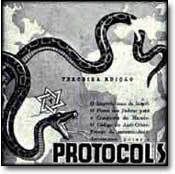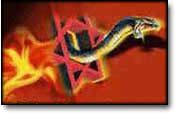Meet the two men responsible for the year’s biggest Jewish event: the pro-Israel lobby’s policy conference
In 2012, when President Barack Obama addressed the Sunday-morning plenary at the AIPAC policy conference, the audience of nearly 13,000 people—including 50 members of the Senate and 217 members of the House of Representatives—watched with rapt attention as the president’s face was projected on the 600-foot projection screen that ran the length of the conference hall, a room big enough to fit the Washington Monument on its side. Obama’s words reverberated throughout the hall’s sophisticated sound system, creating an impressive, overwhelming sensory experience.
Welcome to the AIPAC show.
The AIPAC Policy Conference, which begins Sunday, is the Jewish equivalent of the Oscars or the Grammys—the big, buzzy annual event everyone talks about before it happens and gossips about afterward. It’s by far the largest Jewish event of the year, even though many of the participants themselves aren’t Jewish. And just as the Grammys wouldn’t happen without longtime Executive Producer Ken Ehrlich, the policy conference wouldn’t function without the duo of Jeffrey Shulman and Jeremy Rider.
Shulman, who before joining AIPAC was a White House events staffer under President Bill Clinton and Vice President Al Gore, runs the less glamorous end of production: He coordinates the operational side of the conference preparation, which means he’s responsible for making sure everything runs smoothly with the hotels, organizing the convention-center operation, and maintaining a tight hold on conference security. “I see my responsibility as creating an environment that’s secure, enjoyable, and a comfortable experience for delegates,” Shulman explained. “Jeremy takes them for the ride.”
***
When Shulman, AIPAC’s 42-year-old head of national events, took over the organization of the conference nine years ago, there were 3,000 delegates. This year, more than 13,000 people have already registered, with more expected to register on-site, and they’re looking forward to the full AIPAC experience. That means glossy audio-visual presentations, big-name speakers that typically headline Democratic and Republican National Conventions, and nearly 200 break-out sessions on subjects like Hezbollah, Israel’s Iron Dome missile-defense system, and Iran’s march toward nuclear weapons. As of last year, that also meant AIPAC Village–a multimedia area modeled after the Olympic Village located in the convention-center basement, which is the length of two city blocks. In 2012, the village boasted a race car from a joint U.S./Israeli race team; this year a 360-degree simulator installation allows attendees to imagine they’re standing on the Golan Heights, with Syria and Lebanon close below.
“The way it’s produced rivals any product premiere by Apple or Broadway show,” said Josh Block, a member of the senior staff at AIPAC for 10 years.
“It’s a year-round effort,” Shulman told me last week as he worked on final preparations for the two-and-a-half-day event. “You’re talking about a team of thousands,” he explained, a number that includes everyone from full-time AIPAC staffers (250) to hired waiters (800) and hundreds of independent contractors responsible for everything from the rigging teams to the tech production.
“At our senior level on the operations team, we’re working out of a command and control center,” Shulman said, referring to the communications hub at the convention center. “Staying in touch with hotels to make sure everybody’s checked in and their stay is going well, that the buses are running along the routes throughout the city that are bringing people to the convention center, that the access into the convention center is a smooth operation.” He communicates with his production team via walkie-talkie throughout the conference.
While Shulman coordinates the back end, Jeremy Rider, AIPAC’s 45-year-old director of marketing and creative services, brings the oomph. “The challenge there is to wow the audience year after year, to put on a better show each time,” he told me. (Since 2010, AIPAC has used VIVA Creative, a design-production firm that also works on the President’s Dinner and the National Catholic Prayer breakfast. It won an industry award for its work on the 2010 conference.)
“It’s one of the best, if not the best, conferences production-wise,” said Aaron Keyak, interim director of the National Jewish Democratic Council, who has been attending the annual policy conference since 2004. Other than the Democratic National Convention, he added, “no other conference comes close.”
Each aspect of the conference is designed to be equal parts emotion and intellect, entertaining and educational. This year, for example, one presentation will highlight ReWalk, an Israeli invention that allows paraplegics to walk, currently being tested in the United States. There will be a slickly produced video, of course, but then afterward a ReWalk user will demonstrate the product on stage. And then the inventor of the product, himself a quadriplegic after an accident in 1997, will join him.
Ann Lewis, a longtime Democratic political adviser who served as senior adviser for Hillary Clinton’s 2008 presidential campaign, told me that for speakers—she’ll be presenting twice on Sunday and once on Monday—nothing compares to the well-designed AIPAC experience. “I spend a lot of time going to meetings,” she told me. “The AIPAC conferences are not just the largest, but they’re the best organized and the best thought through I’ve ever been to since I left the White House,” Lewis added. “I have all the information I need; the hotel, the schedule, the transportation. Once I get into the conference center I know there will be someone to show me where to go, who will tell me when I’m being introduced, and how long I have to speak,” she said. “The contrast is stark.”
Rider and Shulman pride themselves on constantly improving. The moment each policy conference ends—after two and a half grueling days of 5 a.m. call times and events that end after midnight—the two meet with their teams to begin planning how to make the next one better. After the 2011 conference, for example, they took a two-day professional development course at the Disney Institute, learning customer service, mobilizing a large staff, and improving user experience.
“All our delegates are investors in this organization,” Shulman explained. When you’ve got more than 12,000 investors, things need to stay organized. And people need to be fed. “Over the course of two and a half days we serve over 22,000 kosher meals, and that’s a significant undertaking.” The quality of that food is another story. “I could have taken the train to Baltimore and had better kosher food at an Orioles game,” a one-time AIPAC attendee from Houston told me.
Perhaps the only challenge more daunting than providing food for 12,000 people is keeping things running smoothly for the conference machers. This year AIPAC is expecting nearly two thirds of the Senate, more than half of the House of Representatives, and the usual smattering of Israeli dignitaries. And that’s to say nothing of the mega donors, the members of the exclusive Minyan, supporters who give more than $100,000 a year to the lobbying organization.
“We want to make sure the experience is easy and as pleasant as possible for our top contributors,” Shulman said. These top donors are given an expedited registration process, photo opportunities with high-profile speakers, and a hospitality lounge serving refreshments throughout the day.
Though certain events are open only to the big spenders, there is one event that every conference attendee makes sure to witness each year: the roll call. No matter how impressive the videos, or how dynamic the presentations, what many delegates are really in Washington to see—or hear, rather—is the roll call during Monday night’s gala event when the names of the congressmen and representatives in attendance are read aloud, and the reach of the organization is most powerfully displayed.
“I think it’s the most members of Congress outside the State of the Union,” Keyak, of the National Jewish Democratic Council, told me. “When you hear those names coming from the podium, it’s really remarkable. And that’s not production, that’s substance.”
“This is not a conference organization, it’s a lobbying organization,” Shulman said. “And our goal is to motivate the membership over the course of two and a half days, get them up to Capitol Hill, lobby their members, and feel good about the organization they’ve chosen to associate with.”
http://www.tabletmag.com/jewish-news-and-politics/125606/pro-israel-lobbys-party-planners
Sunday, 3 March 2013
Meet AIPAC’s Party Planners
Posted @
16:07
![]()
Subscribe to:
Post Comments (Atom)
![[9_10_s22.jpg]](https://blogger.googleusercontent.com/img/b/R29vZ2xl/AVvXsEjTXnQay9wzz0E6nVHrVhaHKoq_zYXDqZjijHlNDQzj90MZzInrCuVX4ciFYCiBfZ7lhlgr2bBhhnl7ddWbhdih5JbXjQYbA605TNyiq046bQqjG2A4S-nHTmh1VBTQSG6tmc23wq47QQ/s1600/9_10_s22.jpg)




No comments:
Post a Comment